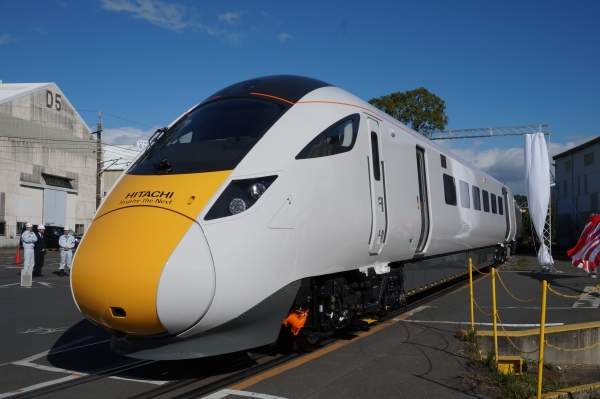According to TechSci Research report, “Rail Composites Market – Global Industry Size, Share, Trends, Competition Forecast & Opportunities, 2029F”, the Global Rail Composites Market was valued at USD 1.68 billion in 2023 and is anticipated to project robust growth in the forecast period with a CAGR of 4.23 % through 2029.
Recent advancements include the integration of sensors and smart technologies into composite materials. These smart composites can monitor structural health in real-time, providing early warnings of potential issues and reducing maintenance costs. For example, sensors embedded in composite components can detect stress, temperature changes, and damage, enhancing safety and reliability.
The rail industry is increasingly adopting recyclable composite materials to reduce environmental impact. Companies are developing composites that can be easily recycled and reused, aligning with global sustainability goals. For instance, certain thermoplastic composites are designed for end-of-life recyclability, contributing to a circular economy.
Browse over XX market data Figures spread through XX Pages and an in-depth TOC on “Global Rail Composites Market” – https://www.techsciresearch.com/report/rail-composites-market/24172.html
Advances in manufacturing techniques, such as automated fiber placement and 3D printing, are revolutionizing the production of composite components. These technologies allow for precise, high-speed manufacturing of complex shapes and structures, reducing production costs and improving the performance of rail composites.
The rail composites market is advancing rapidly, driven by technological innovations, expanding production capabilities, and a strong focus on sustainability. These advancements are enhancing the performance, efficiency, and environmental friendliness of rail vehicles, positioning composites as a crucial material for the future of the rail industry. As the market continues to evolve, further innovations and strategic developments are expected to drive continued growth and adoption of composite materials in rail applications.
The Global Rail Composites Market is segmented into fiber type, resin type, application, regional distribution, and company.
Based on the application, the interior components segment has established its dominance in the global market for rail composites. The interior components segment has established its dominance in the global market for rail composites due to a combination of functional, economic, and regulatory factors. Interior components in rail vehicles, such as seats, flooring, partitions, and panels, require materials that are not only lightweight but also durable and aesthetically pleasing. Rail composites, particularly those made from carbon fiber, glass fiber, and other advanced materials, meet these criteria by offering high strength-to-weight ratios and resistance to wear and tear. This translates to significant weight reduction, enhancing fuel efficiency and reducing operational costs, which are critical considerations for rail operators. The passenger experience is a pivotal aspect of the rail industry. Composites allow for innovative design and customization, enabling manufacturers to create more comfortable, visually appealing, and ergonomic interiors. Features such as noise reduction, vibration dampening, and improved thermal insulation, all achievable with composites, enhance passenger comfort and satisfaction.

Maintenance and lifecycle costs are crucial in the rail industry. Interior components made from composites are highly resistant to corrosion, moisture, and chemical damage, which significantly lowers maintenance requirements and extends the lifespan of these components. This durability ensures that rail operators can minimize downtime and maintenance expenses, providing a more reliable service. Regulatory requirements also play a significant role. Increasingly stringent fire safety standards and environmental regulations necessitate the use of materials that comply with these standards while maintaining performance and safety. Composites are inherently flame-retardant and can be engineered to meet or exceed these regulatory demands.
The push for sustainability and reduced environmental impact aligns with the benefits offered by rail composites. Lightweight interiors contribute to overall vehicle weight reduction, leading to lower energy consumption and emissions, aligning with global sustainability goals.
Major companies operating in Global Rail Composites Market are:
- Hexcel Corporation
- Toray Industries, Inc.
- Gurit Holdings AG
- Teijin Limited
- 3A Composites GmbH
- Avient Corporation
- Gurit Holdings AG
- Reliance Industries Ltd.
- Kineco Limited
Download Free Sample Report – https://www.techsciresearch.com/sample-report.aspx?cid=24172
Customers can also request for 10% free customization on this report
“The global rail composites market is experiencing robust growth driven by technological advancements and a shift towards lightweight, durable, and sustainable materials in railway construction. Key factors contributing to this growth include the adoption of composites such as glass fiber for their superior strength-to-weight ratio, which improves fuel efficiency and reduces operational costs. Innovations in manufacturing processes, including automated lay-up techniques and 3D printing, are enhancing production efficiency and quality control. Furthermore, increasing regulatory standards and environmental considerations are prompting rail operators to integrate composites into various applications such as train carriages, bogies, and infrastructure components. As urbanization continues to drive demand for efficient and reliable transportation solutions, the rail composites market is poised for further expansion globally, with ongoing research and development focusing on enhancing performance and sustainability across the railway sector”, said Mr. Karan Chechi, Research Director of TechSci Research, a research-based management consulting firm.
“Rail Composites Market – Global Industry Size, Share, Trends, Opportunity, and Forecast, Segmented By Fiber Type (Glass Fiber Composites, Carbon Fiber Composites, Aramid Fiber Composites, and Others), By Resin Type (Polyester, Phenolic, Epoxy, Vinyl Ester, and Others), By Application (Interior Components, Exterior Panels, Structural Components, and Others), By Region and Competition, 2019-2029F”, has evaluated the future growth potential of Global Rail Composites Market and provides statistics & information on market size, structure and future market growth. The report intends to provide cutting-edge market intelligence and help decision makers take sound investment decisions. Besides, the report also identifies and analyzes the emerging trends along with essential drivers, challenges, and opportunities in Global Rail Composites Market.
Contact
TechSci Research LLC
420 Lexington Avenue, Suite 300,
New York, United States- 10170
Tel: +1-332-258-6602
Email: [email protected]
Website: www.techsciresearch.com
